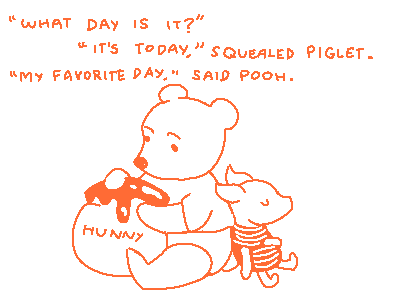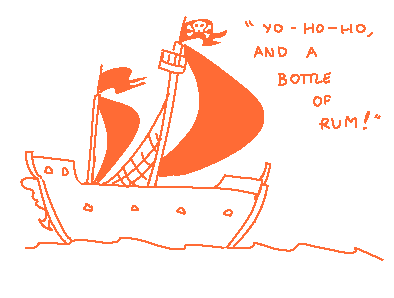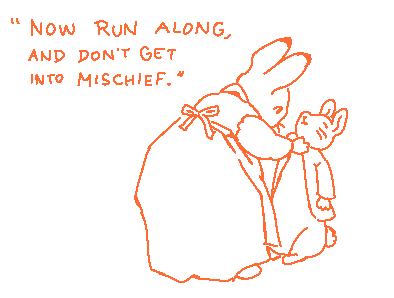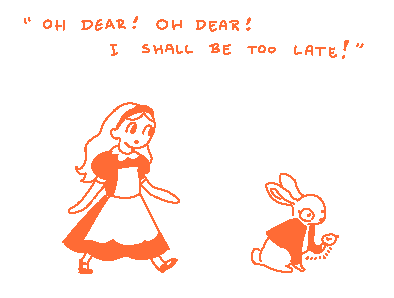
Selected Literature
Here is a selection of notable children's literature from this era, as well as some interesting facts about it!

Winnie-the-Pooh
Written by A.A. Milne, these tales follow the adventures of a gentle, honey-loving bear named Winnie-the-Pooh and his quirky friends in the Hundred Acre Wood. There’s Piglet, the nervous but loyal little pig; Eeyore, the ever-pessimistic donkey; Tigger, the bouncy tiger full of energy; and, of course, Christopher Robin, the kind-hearted boy who brings them all together. Through simple but heartwarming escapades, Pooh and his friends stumble their way through the ups and downs of life, teaching readers of all ages about friendship, imagination, and the magic of seeing the world through a child’s eyes.
Winnie-the-Pooh was first published in 1926, with its sequel, The House at Pooh Corner, following in 1928. Milne’s warm, gentle storytelling, paired with E.H. Shepard’s beloved illustrations, perfectly captured the essence of childhood, and the books quickly became classics. Milne drew heavily from his own experiences as a father, as well as his deep appreciation for the innocence and wonder of childhood.

Did you know?
The character of Winnie-the-Pooh was inspired by A.A. Milne's son, Christopher Robin, and his collection of stuffed animals, including a bear. The real bear, named Winnipeg, was actually a female Canadian black bear that became a famous resident of the London Zoo.

Treasure Island
This book by Robert Louis Stevenson is a timeless adventure that takes readers on a wild ride through the high seas. The story follows young Jim Hawkins, who stumbles upon a treasure map and sets off in search of buried pirate gold. Along the way, he meets a colorful cast of characters, including the legendary Long John Silver, a one-legged pirate with a complex mix of charm and menace. As Jim faces betrayal, danger, and the temptation of untold riches, he learns about courage, loyalty, and the darker sides of human nature.
Robert Louis Stevenson published Treasure Island in 1883, right in the heart of the Victorian era, when tales of adventure and exploration were incredibly popular. The story actually began as a serialized novel in a children's magazine, Young Folks. Stevenson, a Scottish author with a love for travel and storytelling, infused the book with his own sense of adventure. He was skilled in many different genres, including horror; you might have heard of his Strange Case of Dr. Jekyll and Mr. Hyde.

Did you know?
Treasure Island was Stevenson's first big success, and it went on to shape our modern image of pirates—everything from treasure maps with “X marks the spot” to parrots perched on pirates’ shoulders can be traced back to Stevenson’s tale!

The Tale of Peter Rabbit
The tale, written by Beatrix Potter, follows the mischievous young rabbit, Peter, who can’t resist sneaking into Mr. McGregor’s garden despite being warned by his mother. Once inside, Peter finds himself in a heap of trouble as he tries to escape the grumpy gardener’s clutches, dodging rakes, squeezing under gates, and losing his little blue jacket along the way. Peter’s adventure is both thrilling and humorous, and through his narrow escapes, young readers learn gentle lessons about curiosity, mischief, and consequence.
Beatrix Potter was an English writer, artist, and naturalist. She wrote, illustrated, and self-published The Tale of Peter Rabbit in 1902 after struggling to find a publisher who believed in her little story. But when a publisher eventually took a chance on it, Peter Rabbit quickly became a household name. Potter based the character on her own pet rabbit, Peter Piper.

Did you know?
Beatrix Potter was one of the first authors to create merchandise for her characters! In 1903, she patented a Peter Rabbit doll, just a year after the book's release.

Alice’s Adventures in Wonderland
This story written by Lewis Carroll follows a young girl named Alice who tumbles down a rabbit hole into a strange and whimsical world where logic is turned on its head. As she encounters peculiar characters like the White Rabbit, the Cheshire Cat, the Mad Hatter, and the tyrannical Queen of Hearts, Alice navigates a series of bizarre, often humorous challenges that leave her questioning the nature of reality and identity. With its clever wordplay, dreamlike scenes, and delightful absurdity, this book has become one of the most beloved and enduring stories in children’s literature.
It was written by Charles Lutwidge Dodgson, better known by his pen name, Lewis Carroll, and published in 1865. Carroll, a mathematics lecturer at Oxford, created the story to entertain Alice Liddell, the young daughter of a family friend, during a boat trip. After telling her the story, Alice urged him to write it down, and with some encouragement from friends, he eventually published it to great acclaim.
The book’s success also inspired a sequel, Through the Looking-Glass, in which Alice ventures into a world where everything operates like a giant chess game. Today, Alice remains one of the most reimagined and referenced characters in literature, influencing countless adaptations in film, art, and even psychology.

Did you know?
The Mad Hatter was inspired by real-life hatters who went “mad”! In Carroll’s time, hat-makers often suffered from mercury poisoning due to the chemicals used in hat-making, which caused symptoms like tremors and mood swings, leading to the phrase mad as a hatter.
...also
Alice was one of the first heroines with her own opinions and personality. She helped pave the way for more complex characters in children’s literature. Unlike the characters in most Victorian children’s stories, Alice was curious, independent, and a bit of a smart-ass!